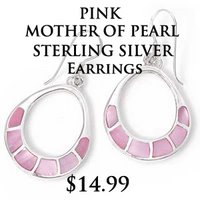Hallmarking Sterling Silver Jewelry
Forms of marking precious metal objects were around from the Byzantine period in the early part of the first millennium A.D. However, it was under the rule of king Edward I of England, known as Longshanks due to his size, that hallmarking was first established.
The term hallmark comes from mark of the hall of goldsmiths in London, who in 1327 were the first official assay hallmarking office decreed by parliament to control the standard of precious metals circulating in the British Isles. To this day they still operate one of four authorized assay offices in Britain.
Before items made of precious metals such as silver, gold or platinum are stamped with an assay’s hallmark they undergo rigorous testing to prove whether or not the metal purity measures up to the established standards. In fact, the word assay is derived from the French word meaning to test, trail or examine.
The basic method of assaying, also known as the cupellation process, was first introduced by the ancient Egyptians. The process starts when a small sample of gold or silver is removed from the object of gold jewelry or silver jewelry to be tested, which is then carefully weighed and measured. The sample is then placed in a cupel, a small receptacle made of bone ash, along with a small quantity of lead. This is then placed in a furnace and heated to a high temperature with a draught of air flowing over it. The lead and any other base metals contained in the gold or silver sample are either oxidized or absorbed into the cupel, leaving only the pure gold or silver behind.
The remains are then weighed and measured and compared to the initial weight of the sample. The cupellation process is the most accurate method for determining metal purity and is the standard technique practiced today. Upon meeting the required standards of sterling silver the item of sterling silver is stamped with the appropriate hallmark.
Until quite recently, most hallmarks were struck using steel punches. The punches are produced in various proportions, appropriate for petite pieces of sterling silver jewelry to hefty items of silver ware. Punches are made in straight shanks for normal punching with a hammer, or ring shanks used with a press to mark rings.
The trouble with traditional punching is that the procedure can misshape the form of the jewelry, resulting in the article having to be reworked after hallmarking is completed. For this reason, unfinished items of jewelry are often sent to the assay office where cuts-offs are taken and tested from the articles before hallmarking is executed.
Today, a new method of marking is being employed using laser technology, which burns the hallmark on to the jewelry, something which is especially valuable for delicate items which would otherwise be damaged by the traditional technique of punching. This procedure of hallmarking uses high power lasers to dissolve material from the metal surface. There are two methods of laser marking, 2D and 3D. Two-dimensional marking burns the outline of the hallmarks into the object, while three-dimensional marking simulates the traditional punching.
Often the hallmark is made up of several elements including: the type of metal, the maker and the year of the marking. In 1999 a new format of English hallmarking on objects of sterling silver was initiated consisting of a maker’s mark, the assay office insignia and a 925 symbol. Optional extra marks are the Lion Passant, the UK sign of sterling silver, and the date letter stamp.
The standardizing of the date letter sequence, shared by all four remaining assay offices in Birmingham, Edinburgh, London and Sheffield, were introduced to bring the UK system closer in line with other European Union standards. However, the problem remains that many countries throughout the world have different standards and specifications that vary considerably, making it difficult for one country to accept another's hallmarking as equivalent to its own.
With the advent of globalization, free trade and the Internet, finding the problematic solution to the standardization of world hallmarking has become increasingly important. In 1972, the EFTA (European Fair Trade Association) consisting of Austria, Finland, Norway, Portugal, Sweden, Switzerland and the United Kingdom held the Vienna Convention, where the first European hallmarking laws for precious metals were put into force.
The convention enables specially designated assay offices throughout member countries of the EFTA to apply, after testing, a common control mark to articles of precious metals including sterling silver in accordance with the Convention. The articles bearing the Convention marks, called CCM: Common Control Marks, are accepted without further testing or marking by the assay office of any destination country that is an EFTA member.
Although this system is not worldwide as yet, Denmark, Ireland, the Czech Republic and the Netherlands have since joined the Convention. And Bahrain, France, Israel, Lithuania, Poland, Spain and several Eastern European countries have shown an interest in the Convention and are preparing for application.
This article was written by David-John Turner for the Silvershake website, an online retailer of silver jewelry at wholesale prices. Purchase today and get gemstone silver jewelry worth up to $60...Free!
Copyright © www.silvershake.com. All Rights Reserved.








